DeepSeek v3.1: Everything You Need to Know About it
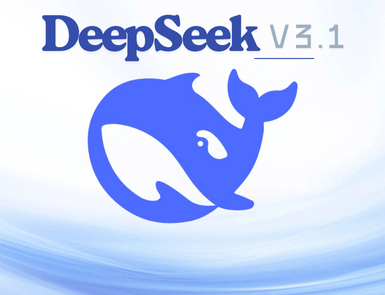
DeepSeek, a China-based artificial intelligence startup, has gained popularity in a remarkably short time. It is emerging as a notable competitor to leading AI models, such as GPT, Gemini, and Claude. With the release of its latest version, DeepSeek v3.1, the company has achieved a significant advancement in the field of artificial intelligence. Let us find out what innovations this new version introduces. Key Advancements in DeepSeek v3.1 Hybrid Reasoning: The latest version of DeepSeek integrates both thinking and non-thinking modes within a single architecture. It allows the AI model to choose between delivering a concise, direct response or a comprehensive, step-by-step answer. In short, it can adjust its reasoning effort based on the complexity of the task. Expanded Coding Window: DeepSeek v3.1 can process a large volume of inputs at once. It not only generates longer documents but also retains information from extended conversations. Structured Tool Calling: This new version comes with enhanced support for structured tool calling. The AI model can connect and work with other software and apps in a more organized way. It makes it easier to pull data from an API or use a coding library. Anthropic API Integration: DeepSeek now works more smoothly with services that follow Anthropic’s API standards. This means users can connect the AI to cloud-based apps with ease and even manage tasks across multiple servers. Optimized Front-end Development: DeepSeek v3.1 is optimized for front-end development, making it capable of generating visually appealing web pages and games with precision. Developers can use this AI platform to build interactive applications and engaging user interfaces. Reduced Hallucinations: DeepSeek is well-suited for real-world applications where accuracy is critical. This new version minimizes hallucinations. Therefore, users are less likely to receive false or inaccurate information. By delivering research-based responses, the AI builds trust among users. Learning from User-Feedback: DeepSeek v3.1 includes an integrated RL component that analyzes user satisfaction signals like clicks, dwell time, and explicit ratings. It helps the AI model to learn from feedback and refine its output accordingly. Improved Speed and Latency: The AI model works faster by making it slim and efficient. This new version reduces the model size by about 30%, which naturally improves inference speed. Additionally, the AI model is trained on advanced GPU clusters that can handle large-scale parallel processing better than CPUs. Improved Performance: DeepSeek v3.1 is more advanced than its previous version, thanks to better prompt handling and cloud optimization. It also performs much better on benchmarks like SweetBench and Terminal Bench, showing improved efficiency and accuracy in coding tasks. Better Relevance for Niche Queries: This new version of DeepSeek uses an intelligent multi-step system to find and re-rank answers. It is better at handling detailed and domain-specific queries. As a result, the AI model now provides accurate results for specialized subjects without requiring extra time or tweaking settings. Limitations of DeepSeek v3.1 Like any advanced technology, DeepSeek v3.1 is not without its challenges. It undoubtedly delivers strong performance and improved accuracy. However, users must also be mindful of its limitations. Complexity: DeepSeek v3.1 supports a multi-stage pipeline to enhance its quality. However, it requires proper monitoring and tuning, which could be challenging for some new users. Overly cautious answers: Sometimes, the AI model gives limited information to prevent false responses. Limited multimodal capabilities. While DeepSeek v3.1 provides support for some structured and image-related data, it is still not a fully multimodal reasoning system. Applications of DeepSeek v3.1 The DeepSeek AI model is flexible enough to be used in various industries. Its primary use cases include: Enterprise Knowledge Bases: Companies can use DeepSeek v3.1 to retrieve verified answers from their centralized digital libraries or internal documents. E-commerce Platforms: Online shopping sites can use this AI model to improve recommendations by analyzing reviews, product details, prices, and availability. This helps them give customers more personalized product suggestions. Customer Support: Companies can use DeepSeek v3.1 to enhance their virtual assistants and chatbots. AI-powered support systems can handle general customer queries with accurate and well-sourced responses. Research on Law and Legal Fields: Lawyers and researchers can rely on this AI model to obtain answers to their queries with references and citations. Conclusion With this upgrade, DeepSeek has become faster, more efficient, and more reliable. Version 3.1 delivers accurate information, reduces errors, and tackles real challenges. Compared to the previous version, it is clearly a step forward. All in all, you can try it confidently if you haven’t already.
Biome.js: Everything You Need to Know About it
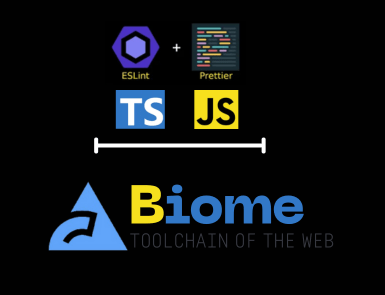
Web developers that work with JavaScript rely on different tools to optimize code quality and ensure a smooth workflow. Although tools like ESLint and Prettier help with tasks like linting and formatting, using them together can create overlap and add complexity. This is where Biome.js steps in. It is a modern toolchain for JavaScript and TypeScript that combines multiple functions into a single package. Let’s get to know more about Biome, its features, and applications. Overview of Biome Biome was officially announced on August 29, 2023. It combines the functions of tools like ESLint, Prettier, Terser, and Babel, making it easier for developers to manage code. Biome supports a unified configuration for linting and formatting. By simplifying setup, it enhances developers’ productivity. The toolchain also delivers high-speed performance thanks to its Rust-based engine. Components of Biome.js Biome’s architecture differs from that of conventional JavaScript tools. It consists of several components that work together to deliver a unified development experience. Formatter: Automatically enforces a consistent code style by adjusting indentation, spacing, and syntax throughout your project. Linter: Provides accurate diagnostics without requiring any external plugins. Parser: Efficiently handles modern JavaScript and TypeScript syntax. Error Reporting: Offers standardized, easy-to-understand diagnostics, helping developers quickly identify and fix issues during debugging. Key Features of Biome.js High Performance: Biome.js is written in Rust, a programming language known for its speed and efficiency. Compared to popular JavaScript-based tools like ESLint and Prettier, Biome.js is roughly 10 times faster. This makes it ideal for large projects, including enterprise applications, back-end services, and front-end frameworks. Zero-Config Setup: Users can start working with Biome immediately, without spending hours tweaking configuration files. It comes with predefined rules and formatting styles that are applied automatically when you run commands like biome format or biome check. No initial setup or configuration files are required. Support for TypeScript: Today, most applications rely on TypeScript. Biome offers built-in support for TypeScript linting and formatting. It formats both TypeScript and TSX files seamlessly. Cross-Platform Compatibility: Biome.js provides a smooth developer experience across macOS, Windows, and Linux. Its cross-platform compatibility makes it suitable for teams working in different environments. Additionally, Biome’s precompiled binary distribution allows developers to run it without complex setup or dependency issues. Integrated Solution: With Biome.js, you do not need to depend on multiple tools for linting, minification, and formatting. It is a unified toolchain that combines all the capabilities. Error Reporting: Another impressive feature of Biome.js is unified error reporting. Developers receive clear, standardized diagnostics in a single format, whether the issue is related to linting, formatting, or TypeScript analysis. Developer Experience First: Biome.js prioritizes developers’ comfort and efficiency. The minimum configuration, straightforward command line interface, and quick integration with modern editors like VS Code make this toolchain developer-friendly. Biome.js guarantees consistent and reliable behavior whether you’re working on a personal laptop, a cloud-based workstation, or within a containerized environment. Community Support: Since Biome.js is an open-source JavaScript toolchain, it benefits from strong community involvement. Developers continue to improve Biome’s integrations, plugins, and editor support. If users have any queries, they can refer to Biome forums, GitHub discussions, or the documentation. Use Cases of Biome.js The Biome.js toolchain can be used in a wide range of development scenarios. Some ideal use cases include: Startups: Biome.js is an excellent choice for new projects. Its user-friendliness and performance make it easy to adopt. This all-in-one toolchain supports code formatting, linting, and diagnostics. Large-Scale Applications: Biome.js is powered by Rust, making it efficient for large projects. Developers can easily manage applications with hundreds of files. TypeScript-Heavy Projects: Biome.js offers native support for TypeScript. For projects that rely heavily on TypeScript, it eliminates the hassle of configuring multiple plugins while maintaining high diagnostic accuracy. Final Thoughts Biome.js represents a significant step forward in JavaScript tooling and is gradually becoming the default choice for projects in the JavaScript and TypeScript ecosystems. Although still in its early stages, it has the potential to evolve into a full-featured toolchain. If you want to modernize your workflow without relying on multiple complex tools, Biome.js is worth exploring.
Podman vs Docker: Quick Comparison of Features & Performance
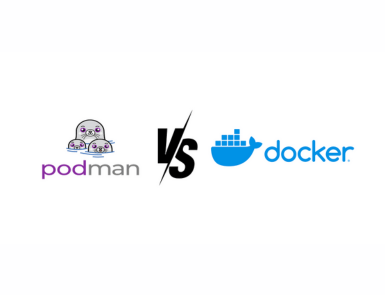
Many web developers get confused about whether to choose Podman or Docker as their containerization tool. Both are popular and powerful, and allow users to package software into standalone units known as containers. Nevertheless, they differ in architecture and features. Therefore, you must choose the one that best suits your project requirements. This post, Podman vs Docker, provides a detailed comparison of both containerization tools. It will help you determine which one is more useful for your unique requirements. Overview of Docker Docker is a renowned containerization platform that has been in use since 2013. It allows developers to package applications and their dependencies into portable containers. These containers remain consistent across different environments, whether it is development, testing, or production. The platform comprises several components, including the Docker engine, Docker CLI, and Docker Hub. Some primary features of Docker include: Docker Hub provides access to thousands of prebuilt container images. Docker containers are portable and run on any machine with Docker installed. Docker supports versioned image management through registries like Docker Hub, making it easy to track and roll back container versions. Overview of Podman Pod Manager, also known as Podman, is an open-source, OCI-compliant container engine. Red Hat built it in collaboration with the community. The tool helps web developers create, manage, and run containers, pods, images, and volumes through a command-line interface. Some key features of Podman are below: Podman features a daemonless architecture, which means it can run without a central background process. The tool supports rootless containers, enabling users to run containers as non-root users. It boosts overall system security. Podman is compatible with Docker. Users can use the same commands and workflows they use with Docker. Podman vs Docker: Comparing Important Aspects 1. Architecture One of the primary differences between Podman and Docker is their architecture. Docker employs a client-server model. Its command-line interface communicates with a long-running daemon process called dockerd. This daemon builds, runs, and manages all containers. However, because this architecture relies on a central daemon, it creates a single point of failure. If the Docker daemon crashes, all running containers will be affected. Podman, in contrast, uses a daemonless architecture. It runs containers as child processes of the Podman CLI, meaning no background services are required. Each Podman command runs in its own process, which results in improved system performance. 2. Root Privileges Root access remains a primary concern for security-conscious developers. Docker needs root privileges to run the Docker daemon. It might pose a security risk if the daemon is compromised. Podman uses rootless containers by default, minimizing the attack surface and improving security in multi-user systems. 3. Building Images & Containers Docker uses the Docker build command with Dockerfiles, making it easy to create container images. Podman provides similar functionality through the podman build command. It uses Buildah to create images without a background daemon. 4. Performance The performance of Podman and Docker is comparable, as both are efficient in container management. Both tools rely on the same underlying container runtimes, such as runc or crun. Nevertheless, Podman has a slightly faster startup time than Docker, as it does not need a daemon to initialize. 5. Security Docker’s reliance on a root-level daemon adds some security risk. However, features such as user namespaces and AppArmor/SELinux profiles enhance security. Podman has the upper hand in terms of security. It integrates seamlessly with SELinux, AppArmor, and seccomp for better policy enforcement. Furthermore, its rootless containers, security modules, and a daemonless approach make it highly secure. 6. Image Management Docker and Podman use similar commands for image handling. Docker relies on docker pull, docker push, and docker images, while Podman uses equivalent commands: podman pull, podman push, and podman images. Although Podman supports the same container registries, it may require extra configuration when working with registries that need authentication. 7. User-friendliness Docker is quite user-friendly and comes with an intuitive command-line interface. Furthermore, it provides extensive documentation and community supported tools. Podman, on the other hand, is generally more developer-focused. Its command-line control and overall flexibility make it convenient for advanced users. However, the tool lacks an official graphical user interface and relies heavily on manual configuration. Podman vs Docker: Which One Should I Use? Both Podman and Docker are leading container tools, each with their own strengths and weaknesses. Web developers looking for a mature ecosystem and broad community support can prefer Docker. It is well-suited for general-purpose development environments. On the other hand, if you prefer a daemonless setup, Podman could be a better choice. Its rootless architecture enhances security. The container engine also supports Kubernetes pods while integrating well with systemd.
Node.js 24: What is new in it?
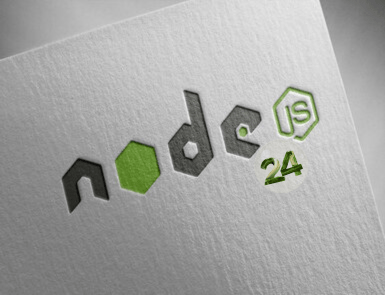
Node.js, the renowned open-source JavaScript runtime, has released its latest version, Node.js 24. With every new release, it continues to become faster, more scalable, and secure. Launched in May 2025, Node.js 24 introduces a range of features that meet the modern needs of developers. Let us explore the latest improvements and additions in this release. New Features in Node.js 24 Node.js 24 features major improvements in performance, scalability, and developer experience. Below is what you can look forward to when upgrading. 1. Upgraded Engine Node.js 24 runs on the V8 v13.6 engine. It unlocks a range of advanced JavaScript capabilities. One notable addition is Float16Array, which improves memory efficiency in numerical operations. This is particularly beneficial for tasks like machine learning and graphics. The engine upgrade also ensures faster execution for many JavaScript operations. 2. Improved ESM (ECMAScript Module) Support Node.js 24 offers enhanced support for ECMAScript Modules (ESM). It makes it easier for developers to work with JavaScript’s modern module system. With native ESM support, developers can seamlessly interoperate between ESM and CommonJS without the need for complex transpilation. The update also supports the use of dynamic import() for asynchronous module loading, along with smooth handling of both .mjs and .js files. These improvements simplify the migration from CommonJS and boost compatibility with leading JavaScript tools. 3. Enhanced Performance Another major improvement you notice in Node.js 24 is its performance. This new version uses less memory, which in turn reduces startup time. Additionally, it offers improved WebAssembly support, faster JavaScript execution, and efficient garbage collection. Node.js 24 is also suitable for projects with strict latency requirements. Users experience negligible cold starts even for microservices and serverless functions. 4. Native Fetch API Support Node.js 24 provides support for the native Fetch API, bringing browser-like HTTP request capabilities straight into the runtime. Now users do not need to rely on external packages like Axios or node-fetch to perform network requests. This ensures better compatibility between client-side and server-side JavaScript environments. 5. Global URL Pattern Previously, developers had to juggle between Node.js and browsers when implementing URL pattern matching across different environments. Node.js 24 addresses this with the introduction of the URLPattern API. The API lets developers match and parse URLs using a straightforward pattern syntax. Since it works seamlessly in both browsers and Node.js 24, the same routing code can now be used on the server and in the browser without modification. 6. Stable Built-in Test Runner Node.js 24 features an upgraded built-in test runner that enables fast and efficient testing. It supports modern JavaScript features, mocking, subtests, and asynchronous tests. Web developers do not need to rely on external libraries like Mocha or Jest anymore. The test runner offers a comprehensive set of assertion methods and built-in coverage reporting. 7. Windows Build System Revamp Node.js 24 requires ClangCL instead of MSVC (Microsoft Visual C++) on Windows for building. It boosts build consistency with other platforms, modernizes the toolchain, and unlocks optimization opportunities. Now users can benefit from a more unified and maintainable build process across different operating systems. 8. Consistent Web Streams APIs Node.js 24 comes with stable Web Streams APIs, offering a consistent, browser-compatible interface for handling streaming data. The API is useful for managing large datasets effectively, such as real-time data processing, file uploads, downloads, and more. Web Streams allow developers to consume and generate data without storing it all in memory, optimizing efficiency for I/O-intensive applications. 9. Diagnostics & Debugging Node.js 24 comes with error diagnostics and debugging tools. Developers get clear error reporting, expanded stack, and numerous performance profiling tools. This new version streamlines troubleshooting and makes maintenance of a production-grade application quick and organized. Node.js JavaScript runtime enables users to optimize code with minimal overhead. They can also easily identify bottlenecks and trace issues. Final Words Considering its features, it would be right to mention that this new version of Node.js has taken a significant leap in terms of improvements. It reduces developers’ dependency on third-party tools for tasks like testing and code maintenance. With features like native WebSocket support, built-in test runner, and URLPattern API, Node.js 24 helps you write clean, consistent, and future-proof code across your entire stack. All in all, whether you are building an API or a large-scale real-time platform, Node.js 24 can meet your needs.
Gemini CLI: Everything You Need to Know About it

Web developers have been using command-line interfaces (CLIs) for years. CLIs allow them to interact directly with the system and its resources. Moreover, these tools help automate various tasks and offer precise control over the system. With the rise of artificial intelligence, AI-powered CLIs have also entered the market. This post explores one such CLI. It has gained popularity for bringing Gemini’s capabilities directly to your terminal. If you haven’t guessed yet, it’s the Gemini CLI. Let’s explore what Gemini CLI is, its features, and applications. Overview of Gemini CLI Gemini CLI is an open-source AI agent that allows users to interact with Google’s Gemini AI models. It connects to Google Cloud’s Vertex AI platform to access Gemini models. It sends user prompts to these models through Vertex AI’s APIs, then displays the generated responses directly in the terminal. Built by Google, the Gemini CLI was first introduced in February 2024. It uses the ‘Reason and Act’ (ReAct) loop, along with built-in tools and a local or remote MCP server, to assist with code generation, bug fixing, and testing. Gemini CLI supports AI-driven coding and data analysis without the need for a browser-based interface. It also performs tasks like content generation, deep research, task management, etc. The CLI is compatible with multiple operating systems, including Windows, macOS, and Linux. Therefore, you can easily access it regardless of which platform you use. Key Features of Gemini CLI Gemini CLI provides extensive features that simplify code generation and streamline web development. Some of its key capabilities include: Access to Gemini Models: Gemini CLI provides terminal-based access to the Gemini models of Google. These models are excellent in natural language processing. You can send code-based prompts directly from the terminal, and the responses will appear there as well. Gemini CLI helps with code generation and assistance, code debugging, content drafting, and reasoning tasks. Cloud-Native Integration: Since Gemini CLI connects to Vertex AI, it integrates smoothly with the Google Cloud ecosystem. As you can choose where it runs, you can pick regions for faster performance. You can also set permissions using Google’s IAM roles and control who can access it. Powerful Performance: Gemini CLI uses Gemini 2.5 Pro, a powerful AI model from Google, designed for coding. It handles approximately 60 requests per minute and around 1,000 requests per day at no charge. Moreover, it has a huge memory of 1M tokens. Multi-model Inputs: Apart from handling text prompts, Gemini CLI can process image files and other media types through multi-model inputs. You can interpret images, generate captions, and even answer questions based on visual content. Script Integration: Gemini CLI supports integration into different scripts. It works seamlessly with Python, shell scripts, and CI/CD pipelines. You can also use this CLI to automate your routine AI-driven tasks. Prompt Flexibility: Gemini CLI allows you to input prompts directly in the terminal or load them from external JSON files or plain text. It makes handling complex tasks, such as uploading long documents, images, and structured data, much easier. Open & Extensible: As Gemini CLI is open-source, developers from all over the world contribute to it by reporting bugs and suggesting features. Therefore, the platform has continually improved its security patches and features. Powerful Built-in Tools: Gemini CLI comes with various tools to improve your workflow. For example, you can enhance response accuracy by using Google Search. It gives you real-time web results. Use Cases of Gemini CLI Quick Code Generation and Testing: One of the primary applications of Gemini CLI is code generation. The CLI can create functions, classes, and even entire code files in multiple languages. You can also use it to review existing code. Data Analysis: Data analysts can also leverage Gemini CLI to analyze data, generate summaries, and interpret data. They just need to upload their data. Image Understanding: Users can upload images and receive analysis using multimodal support. Gemini CLI can generate image captions, analyze visual content, and more. Automation in DevOps: You can embed Gemini CLI in cloud functions or shell scripts to automate writing YAML config files, creating documentation, and generating Terraform suggestions. Final Words Gemini CLI is an ideal platform for developers who want to integrate AI into their workflows. Unlike other CLIs, it is clean, efficient, and easy to configure. Whether you want to automate code reviews, run tests, or explore creative projects, Gemini CLI won’t disappoint you. For individuals working within the Google Cloud ecosystem, the Gemini CLI is worth exploring.
Cursor vs Windsurf: An In-depth Comparison of Two Prominent AI-Powered Coding Editors

Web developers cannot ignore the potential of AI-powered coding editors in modern software development. These code editors provide a substantial competitive edge by reducing errors and enhancing productivity. While many AI coding editors are available, this post compares two of the most promising ones: Cursor and Windsurf. This Cursor vs. Windsurf comparison will help you determine which tool best suits your needs. Let us begin. Overview of Cursor Cursor is an AI-powered code editor that helps developers write, debug, and manage web code. Anysphere built this editor on top of Visual Studio Code. It was initially launched in 2023; however, the public release of version 1.0 took place in June 2025. The core strength of the Cursor lies in Large Language Models (LLMs). It helps you write code, suggests fixes, and streamlines collaboration. Some of its key features include: AI Code Completion: The Cursor provides real-time code suggestions and generates code snippets as you write. Context-Aware Autocomplete: The editor predicts and completes code according to the context of your project. Natural Language Queries: You can ask questions in plain English to get code solutions. Bug Bot: The tool identifies bugs and suggests fixes straight into the editor. Overview of Windsurf Developed by Codeium, Windsurf is another promising AI-powered code editor. This AI-based coding assistant was released in November 2024. It is fully collaborative, works in the cloud, and understands your coding context. Unlike Cursor, Windsurf is not tied to a particular Integrated Development Environment (IDE). Below are a few primary features of Windsurf. Easy Integration: Windsurf supports a diverse range of programming environments. Real-Time Collaboration: The editor supports multiplayer coding. AI-Powered Refactoring: It optimizes and cleans up code automatically. Cursor vs Windsurf: Breaking Down the Differences Based on Different Factors AI Capabilities Both platforms are highly AI-capable. However, they take different approaches. The Cursor supports deep AI integration with local context. You can perform tasks like code refactoring, debugging, and generating functions from prompts. Moreover, since it is built on VS Code, it supports extensions like Copilot and custom LLMs. The AI editor of Cursor not only answers questions but also completes the entire workflow from start to finish. It also provides you access to tools like Grep searches, Fuzzy file matching, and Advanced codebase operations. The AI of Windsurf is designed for collaborative and contextual understanding. It is capable of tracking discussions, explaining diffs during pull requests, and responding to queries. Windsurf has powerful AI memory and documentation features. Therefore, it can explain why and how certain coding decisions are made. Some standard tools you get with Windsurf are file editing, web search, and terminal commands. User Experience (UX) The UX determines the adoption and effectiveness of AI-based code editors. The user experience in Cursor is similar to that of VS Code. If you are already familiar with VS Code, you will find it easy to use. Even new users can quickly get started with it, as it retains conventional IDE behaviors. Windsurf introduces a fresh approach to interacting with the editor. Its interface feels like a blend of Notion and VS Code. Newbies might take some time to adjust if they have previously used desktop-based IDEs. However, once familiar, the editor feels extremely intuitive. Integration The Cursor integrates seamlessly with your local environment, databases, and terminals. Additionally, you can incorporate it with numerous external APIs and 3rd-party tools. It also provides support for numerous plugins and extensions. Windsurf is notable for its seamless integration with cloud workflows, such as GitHub, Supabase, and Vercel. Though integration support is limited compared to Cursor, it is well-suited for cloud-first development and fresh-start projects. Use Cases Cursor is well-suited for individual developers working on large codebases, as it offers deep AI assistance, precise control, and support for local development. Solo developers familiar with the VS Code interface can use it to build applications that require extensive debugging, backend services, and dependency management. On the other hand, Windsurf is ideal for collaborative environments involving remote teams and open-source contributors. The code editor supports live code sharing, pair programming, AI-assisted code explanation, and rapid prototyping. Cursor vs. Windsurf: Which One Should I Pick? Both AI Code editors have their advantages. Which one you should choose depends on your development style, the structure of your team, and your end goals. Use Cursor if you want to work locally and have access to the dev environment. It gives you precise code completions and refactoring suggestions. On the contrary, if your project demands team collaboration and cloud-first workflow, Windsurf would be a better option. If you are still unsure, try both and decide for yourself. Both AI editors offer free versions with some limitations.
WebLLM: Bring AI Language Models to Your Browser
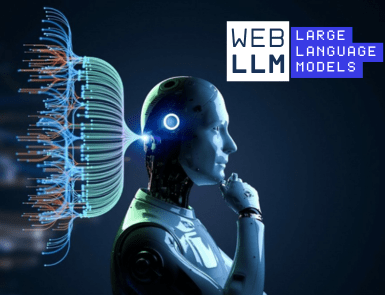
Over the past few years, artificial intelligence has transformed our lives significantly. Today, many people rely on AI tools to solve their problems. Tools like DeepSeek, ChatGPT, and Gemini assist users in various ways. The good news is that you can now use AI models directly in your browser without relying on the cloud. WebLLM is an in-browser LLM inference engine that makes this possible. Let us learn more about this platform. Overview of WebLLM WebLLM is an open-source, in-browser LLM inference engine developed by the MLC-AI team. It was first released in December 2024. The platform runs LLMs (Large Language Models) directly in the browser using WebGPU. You do not need to use cloud-based APIs anymore. Since WebLLM runs the model directly on your device, it eliminates the need for server-side computation, resulting in faster responses and enhanced privacy. How does WebLLM work? WebLLM is powered by the WebGPU API, a modern graphics interface designed for the web. It helps WebLLM execute complex tensor operations required for running LLMs. WebGPU API can perform deep learning computations and matrix multiplications. WebLLM loads quantized versions of language models, optimized to reduce model size and computational demands. These models are pre-trained and converted into formats compatible with in-browser execution. Quantization reduces numerical precision, which ensures low memory usage. This makes the model small enough to load and run directly in a browser. Once loaded, WebLLM runs the model entirely within the browser using WebGPU. The model processes inputs and generates outputs locally, delivering near-instant responses. WebLLM is built on MLC-LLM, a framework that compiles and optimizes AI models for efficient execution straight in web browsers. Some official supported models by WebLLM include: Llama 3 (Meta AI) Mistral (Open-weight LLM) StableLM (Stability AI) Gemma (Google’s Lightweight LLM) Key Features of WebLLM Cross-Platform Compatibility: WebLLM runs on both desktop and mobile devices. It supports almost all modern browsers, including Google Chrome and Microsoft Edge. Additionally, users can use it on several operating systems, such as Windows, macOS, and Linux. You do not need to install any additional software. No Internet Required: Once the language model is downloaded and loaded into the browser, WebLLM runs it entirely offline. People can use the model without depending on cloud services, even with limited or no internet connectivity. The offline service is just as secure and fast. WebLLM handles all computations locally, with no network delays or external dependencies. Exceptional Privacy: Since WebLLM processes data locally within the browser, there is no fear of information leakage. Your conversations and inputs remain confidential, as no remote server is involved. The platform is ideal for individuals who value privacy and are concerned about data breaches. Open Source Platform: WebLLM is an open-source architecture. Users can seamlessly integrate it into their projects. It lets users inspect the code and make modifications as per the requirements. Furthermore, open-source licensing also encourages transparency and community collaboration. Excellent Performance: Although WebLLM runs in a browser environment, it still delivers decent performance. It can generate 15 to 20 tokens per second. This AI engine also offers ultra-low latency for real-time interaction. WebLLM uses aggressive quantization, reducing 32-bit weights to 8-bit or less. This significantly lowers memory bandwidth requirements. Pros and Cons of WebLLM Like every technology, WebLLM has some strengths and limitations. Advantages WebLLM enhances privacy by running AI models directly in your browser, with no data sent to external servers. The platform runs directly in your browser—no extra software needed. It processes results in real time, so there is no noticeable latency. WebLLM is ideal for users who want to deliver AI experiences without maintaining backend servers. As an open-source platform, it gives developers access to its codebase. Users can stream AI model responses in real-time. WebLLM helps save money by eliminating the need for costly API calls and inference servers. Disadvantages The initial loading time is a bit higher, especially on slower devices. WebLLM relies on WebGPU, which may not be supported in some browsers. Future of WebLLM? The future of WebLLM is promising. Its adoption is steadily growing, thanks to key features like strong privacy and offline capabilities. As browsers and devices continue to improve, we can expect even faster and more efficient in-browser AI experiences.WebLLM can be used to build various applications, such as writing tools, chat assistants, and educational apps. Final Words WebLLM is revolutionizing AI development. It has unlocked new opportunities in building AI-powered web applications. It makes running large language models in the browser easier by supporting chat completions and streaming. If you want to run an AI language model right in your browser without sacrificing privacy, WebLLM is worth a try.
Kestra: Everything You Need to Know About It

Today, data serves as the foundational pillar across nearly all industries. However, optimizing data and managing its flow are always significant challenges. Kestra is a powerful tool that enables businesses to run and monitor data flows easily. The platform is gaining attention from developers worldwide. Let us explore what makes Kestra unique. This post dives into its architecture, features, and real-world use cases. Overview of Kestra Kestra is an open-source workflow orchestration tool. It helps building and automating workflows across all modern infrastructures. Kestra was first released on February 1, 2022. Ludovic Dehone, the CTO of Kestra, initiated this project in 2019. Written in Java, the platform lets users create, schedule, and monitor complex tasks and processes. It features a YAML-based syntax, making it user-friendly for beginners. In addition, Kestra supports integration with various APIs, data systems, and cloud services. It is known for managing complex data workflows and building pipelines in a few minutes. Let us take a closer look at the architecture of this platform. Architecture of Kestra Kestra has a cloud-native architecture that makes it a comprehensive tool. Some of its primary components include: Executor: It is the heart of Kestra’s runtime environment. The executor launches the schedule of workflows. It also monitors the state of running workflows. If any task fails, the executor restarts it. Kestra reacts instantly to any fluctuation in the task due to its event-driven architecture. Scheduler: The scheduler organizes the workflows using CRON or event-based triggers. It determines when workflows should run and assigns execution to the executor services. UI & API: It includes an easy-to-use web interface to manage workflows, system health, and logs. Kestra features a REST API. This graphical user interface allows users to design, monitor, and troubleshoot workflows without writing any code. Storage & Persistence: Kestra stores workflow definitions, execution logs, and metadata in a centralized database. The database ensures high uptime and provides quick recovery support. Plugins: Kestra features a robust plugin system that enables integration with third-party services such as AWS, Azure, and Git. It provides support for 200+ plugins. Queue: This component is responsible for managing communication between components. Kestra features pluggable queue systems. Features of Kestra Kestra offers a rich set of powerful features that set it apart from other workflow orchestrators. Some of its most noteworthy features include: Community Support: Kestra is an open-source orchestrator with a growing community. Numberless users contribute to its development and share their experiences. The platform offers many resources to its users, including a contributor guide and a plugin development guide. It also has an FAQ section that addresses common questions. Simplicity: Kestra allows you to define workflows as YAML files. Unlike other orchestrators, Kestra takes an intuitive and readable approach that reduces the complexity of developing and maintaining pipelines. As Kestra is a language-agnostic platform, developers can write tasks in various languages, such as Python, Javascript, Java, and more. Developer-Friendly UI: Kestra has an intuitive and accessible user interface. It features an easy-to-navigate dashboard, allowing developers to debug errors, edit workflows, and rerun them without switching tabs. Developers get real-time insights into tasks execution, detailed logs, and other metrics. These features enable faster debugging and enhance developer productivity. Easy Setup and Configuration: Kestra supports straightforward configuration. Users can easily access it regardless of their skill levels. They do not need deep technical expertise to understand its functionality. Its clean and user-friendly interface simplifies complex tasks. Scalability: Kestra is built for horizontal scalability, allowing it to grow seamlessly with demand. Developers can manage everything from simple workflows to complex data pipelines. Its cloud-native architecture scales effortlessly to support millions of executions. Scheduled Triggers: Kestra allows developers to trigger workflows via CRON schedules, messaging queues, API calls, and file system events. This makes it ideal for both time-bound processes and reactive, event-driven architectures. Security: Kestra features role-based access control authentication. You can assign particular permissions to users based on their roles within the organization. Kestra also has an audit logging feature to track user activity and unusual behavior. These security features are suitable for businesses with strict compliance requirements. Use Cases of Kestra ETL/ELT Pipelines: Kestra helps you manage data workflows by pulling data from sources. It can process data and send it to data warehouses. The platform works well with databases like MySQL, BigQuery, and Snowflake. Workflow Automation in DevOps: Developers can use Kestra to automate code testing, set up servers, and launch web applications. In web development, deployment and testing are repetitive tasks. Kesta supports these tasks by orchestrating CI/CD workflows. Running Tasks Based on Events: Kestra initiates workflows in response to events, such as file uploads or incoming messages. In short, the platform can respond to real-time changes. Machine Learning Pipeline Automation: Kestra is well-suited for managing the entire machine learning workflow, from data preparation to model testing and deployment. Checking & Cleaning Data: Kestra helps developers verify that data is accurate and properly formatted before using it for analysis. Conclusion Kestra is an innovative platform that helps you manage complex data workflows. You can integrate it with numerous tools and systems. Its event-driven architecture and low-code approach empower developers and operations teams. If you want to automate your data processes with confidence, consider giving Kestra a try.
Businessman vs. Entrepreneur: What are the Key Differences?

Sometimes, people use the terms ‘businessman’ and ‘entrepreneur’ interchangeably. At first glance, both titles seem similar. They exhibit many similarities in terms of management and operation. However, they take distinct approaches to business. This post, Businessman vs. Entrepreneur, will help you decide which path is right for you. Read it to explore the primary differences between the terms. Overview of a Businessman A businessman runs a business that provides products or services to customers. The primary goal of a business owner is to make a profit by selling their goods or services. Generally, they have a thorough understanding of their industry and target customers. A businessperson might purchase a franchise or launch a new business. However, the business concept is usually tried and tested. Generally, business people try to keep things predictable and do not take significant risks. In short, they do not develop new things. You can measure a business’s success by its profit. It operates in a competitive market and thrives by outperforming its rivals. Types of Businessmen Sole Proprietor: A sole proprietor is someone who owns a business on their own. They manage the whole company and make all the decisions themselves. General Partners: In this type of business, two or more individuals share ownership. They are equally accountable for managing the business and legal obligations. Small Business Owner: This type of owner runs a business that caters to a particular audience in a niche market. They handle everything from operations and marketing to after-sales service. Overview of an Entrepreneur Entrepreneurs are known for their innovative vision. Unlike businessmen, they work on new ideas. They find gaps in the market and develop solutions that can fill them. In general, they are not afraid of taking risks. Entrepreneurs produce products and services that bring positive change to the world. Their aim is not merely to make a profit; instead, they strive to improve the lives of their customers. Mark Zuckerberg, Bill Gates, and Steve Jobs are among the most renowned entrepreneurs. Types of Entrepreneurs Innovators: These types of entrepreneurs are highly visionary. They launch products or services that are new to the market. Sometimes, their innovation disrupts the existing market or creates a new one. This type of innovation needs substantial capital as it involves severe risk. Hustlers: While these entrepreneurs do not develop completely new concepts, they come up with impressive ideas. Generally, they begin a startup with low capital and focus on hard work and determination. Imitators: Imitators use existing ideas and try to improve them. They refine and optimize business concepts that have yet to reach their full potential. Buyers: These entrepreneurs acquire existing businesses using their financial resources. They implement significant changes to improve the business. Businessman vs. Entrepreneur: Key Differences Business Nature: A businessman works on a proven business model, whereas an entrepreneur develops innovative products or services. Approach to Risk: A businessman calculates risk after an in-depth analysis. They prefer to invest in projects that promise a stable return. Entrepreneurs are risk-takers and well-prepared for uncertainties. Mindset: Businessmen follow conventional business practices that ensure stable incremental growth. On the contrary, entrepreneurs adopt a dynamic and flexible approach. They are open to trying things and learn from mistakes. Vision: Most business professionals set short-term goals to boost productivity and get quick results. In contrast, entrepreneurs often have a long-term vision. They follow a well-planned strategy to achieve their long-term goals. Leadership: Businessmen value hierarchy and clearly defined positions. On the other hand, entrepreneurs focus on building a team that works collaboratively to achieve a shared goal. Market Entry: Businessmen prefer to work in an established market with a defined customer base. Entrepreneurs create their markets. They bring a transformative shift in their niche. Similarities: Businessmen vs. Entrepreneurs Businessmen and entrepreneurs are different in many ways. Nevertheless, they also have some things in common. For example: Both entrepreneurs and business owners are willing to work long hours. They have strong work ethics. They have excellent communication and persuasive skills. Both entrepreneurs and business people are proficient in self-promotion. They know how to pitch their products or services. Most entrepreneurs and business owners start their journey on a small scale using limited resources. They test the market, understand consumer behavior, and plan strategies accordingly. Conclusion Both businessmen and entrepreneurs have a significant role in economic growth. Nonetheless, they possess different mindsets and goals. We hope this businessman vs. entrepreneur post makes you aware of the challenges and opportunities of both profiles. No matter which path you pursue, harnessing the power of technology is essential. At Almas Web Consulting, I offer technology consulting services. As your tech advisor, I can guide you in implementing solutions that streamline your business operations and promote long-term growth. Reach out if you are planning to pursue either of these paths.
Why is Web Development So Hard?
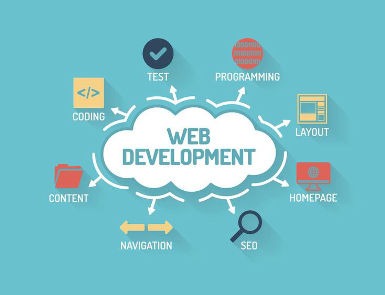
Web development is a creative field with endless career opportunities. However, like every profession, it has some challenges. While the journey of coding and designing may seem straightforward, it has several obstacles. This post explores why web development can be challenging for aspiring developers. Let us begin. Top Challenges in Current Web Development Modern web development has various struggles. Developers balance design, functionality, and performance to deliver an exceptional user experience. Some challenges you may face as an aspiring developer include: 1. Rapidly Evolving Technologies: Web development has advanced significantly over the past decade. Ten years ago, mastering a single programming language was sufficient to build a successful career. Today, developers stay updated with multiple languages, frameworks, and tools to remain competitive. New frameworks and libraries are introduced regularly. Technologies that were cutting-edge a year ago are outdated today. Even well-established frameworks like React, Angular, and Vue continue to evolve. The key to staying relevant is adapting to the ever-evolving web development landscape. 2. Required Broad Range of Skills: Individuals who want to become full-stack developers must master diverse skill sets. They need proficiency in the following technologies: Frontend development (JavaScript, HTML, CSS, UI/UX design, etc.) Backend Technologies (Python, Rust, Node.js, and more) Additionally, understanding DevOps (CI/CD pipelines) is crucial. They cannot overlook various cloud infrastructures and API technologies. 3. The Complexity of Web Development: Websites that look seamless and visually appealing may have complex backends. Managing databases, ensuring responsive design, and optimizing performance is an uphill battle. Remember, website management is an ongoing process. You will frequently clean up codebases and apply security patches to prevent breaches. Without patience, managing these tasks can become a juggling act. 4. Performance Optimization: Website performance optimization is crucial for SEO and user experience. Search engines prioritize websites that load quickly and are responsive. However, it is not as easy as it seems. You will need to perform various optimization tasks. It can range from setting up content delivery networks (CDN) and compressing images to minify web code. 5. Meeting Users’ Expectations: Nowadays, users want more than a fully functional website. They demand a secure, fast-loading site that provides a seamless experience across all devices. Websites with poor UI/UX fail to attract the expected traffic. Therefore, developers keep testing the user experience across various screen sizes. They make sure that the website is compatible with different browsers. As an aspiring developer, you should be ready to experiment to meet user expectations. 6. Security Challenges: With evolving cyber threats, web security has become essential. Handling security issues is not a piece of cake. Nowadays, cross-site scripting, SQL injection, data breaches, and DDoS attacks are primary security concerns. Developers have to implement best practices to safeguard websites against these attacks. They enforce strong authentication and authorization systems and encrypt sensitive information using HTTPS. Additionally, developers perform data sanitization to clean and filter user inputs. These processes help in preventing security vulnerabilities in web applications. 7. Integration of AI: Developers cannot ignore artificial intelligence in the current web development scenario. AI enhances user experience, improves security, and speeds up web development. However, it also comes with some hurdles. Integrating AI-powered chatbots and predictive analytics solutions can be tough. Developers must be proficient in machine learning frameworks and data processing tools. Moreover, they must be aware of different APIs and AI tools. Incorporating AI technologies requires an understanding of ethical AI principles. 8. Soft Skill Requirements: Technical expertise alone is not enough to succeed. Strong interpersonal skills are also essential. A developer must be a problem solver, a team player, and an impressive communicator. As web development projects become more collaborative, these things become important. Final Words Web development demands a strong technical skill set and the ability to keep up with ever-evolving technologies. Without a strong learning mindset and passion, the process can become difficult. We hope the above points help you handle the challenges of web development. If you are struggling to navigate the complexities of web development, I am here to help. At AlmasWebConsulting, I can help you transform complex ideas into a high-performing website. Get in touch if you need web development consulting or assistance.